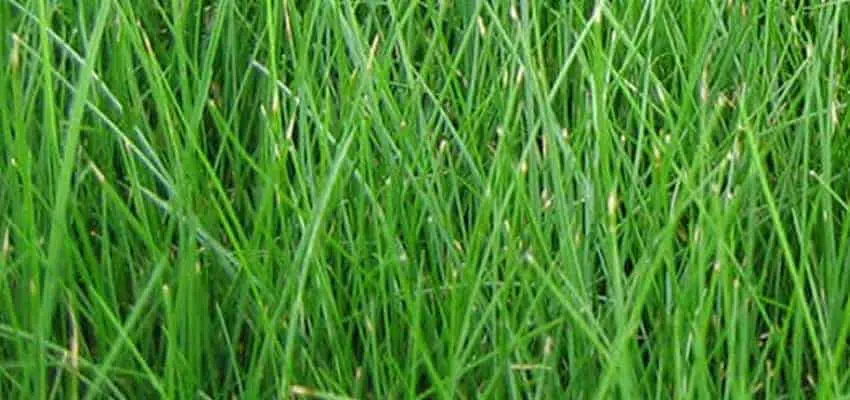Fine Fescue Grass
Selecting the right type of grass can be a confusing and complicated process. We’ve provided extensive information on Fine Fescue below to help people determine if it’s the right fit for their lawn needs.

Some Facts About Fine Fescue
There are five different varieties of Fine Fescue. Among the five, they can vary quite a bit based on their appearance as well as where each one is best suited for use. Overall, this is a species of grass that does well in cooler and more temperate climates.
Fine Fescues are drought resistant, but they will go dormant. This means the grass will survive drought conditions but will brown and not have a desirable appearance.
However, once irrigation is in place or rainfall resumes, the grass will return to its natural state. Heat can also cause this problem.
map
Fine Fescues are known for going dormant during prolonged exposure to heat. If summer brings one to two weeks of 90 degree heat, then this type of grass is likely to retreat to dormancy.
This type of grass also has a moderate to very good salt tolerance, which is somewhat hard to find, especially with cool season grasses.
Characteristics & Traits
Fine Fescues are distinguishable by their fine leaf texture and high leaf density. Many people choose these grasses because they can tolerate poor soil conditions.
One downfall of Fine Fescue is that it does not handle foot traffic well.
Although it is considered to have a moderate tolerance for wear, this grass type should not be used where there is a constant rate of traffic. It can eventually recover from high traffic wear and tear, but it is slow to do so.
Its impressive salt tolerance is why it does so well in maritime regions. It can also survive in shaded areas and areas that are higher in elevation, which is very rare.
Fine Fescues are found in cooler climates around the world including maritime regions.
Clay, sandy, or rocky soil types that other grasses could never survive in, the Fine Fescues can thrive in.
It has a tendency to become thatch, which is problematic as well as unattractive.
The toughness of the leaves can also make it more challenging to mow compared to other grass types.
Where Did It Come From & What Are The Varieties?
Here’s more in-depth information on the five main varieties of Fine Fescue:
Sheep Fescue also known as Festuca Ovina
The Sheep Fescue is also often referred to as “Blue Sheep Fescue.” It is an ideal option for lawns that will probably be “low maintenance.” This includes areas with low to no mowing patterns. This grass can also blend well with wildflowers and yet not crowd them out. Among the Sheep Fescues, you have choices like Quatro, which has a flat or powder blue hue, and Azay Blue, which is a blue-green color.
Creeping Red Fescue also known as Festuca Rubra subp. Rubra
As the name would imply, this type of fescue has rhizomes making it a creeping grass. It has been used in seed mixtures meant for shaded yards for many years. There is the “Common type” and the “Strong Creeping Red Fescue.” The first one is more economical but lower quality. The latter one is a better quality and is sometimes even imported from Europe.
Slender Creeping Red Fescue also known as Festuca Rubra subp. Litoralis
It is similar to the Creeping Red Fescue, yet this variety does not grow or spread as rapidly. This is a Fine Fescue variety that can tolerate lower mowing heights. This makes the Slender Creeping Red Fescue ideal for places like golf courses. However, what makes this type of grass popular is actually its excellent salinity tolerance. Mixed with other seeds, “fults” is the most widely used alkaligrass that is used for salty soil.
Chewings Fescue also known as Festuca Rubra subp. Commutata
This variety of Fine Fescue is named after the man who first discovered and sold it: George Chewings of New Zealand. Chewings was peddling this type of seed in the late 1800s. As is characteristic for Fine Fescues, this one has a high tolerance for shade. It also makes an ideal turf because of its fine texture and deeper shade of green hue. Keep in mind this variety is not a creeper, so seeding is required.
Hard Fescue also known as Festuca Longifolia or Duriuscula
The Hard Fescue is becoming more popular because it has a better ability to tolerate heat than the other Fine Fescues. This type is a bunch grass, so it will require seeding and establishment.
Advantages & Disadvantages
All grasses are not created equal, and it is important to have an understanding of what makes each of them different and unique.
Here’s a quick list of pros and cons for Fine Fescues.
Advantages
- Performs well in cooler climates, including maritime locations; in fact, it is considered very cold tolerant.
- It has a moderate to very good tolerance for salt, which is difficult to find.
- Fescues prefer low nitrogen fertility.
- Its tolerance for shade is very good.
- It has a tolerance for poor soil conditions, such as sandy, rocky, or clay.
- It is an overall low maintenance grass.
Disadvantages
- It can develop thatches.
- The wear tolerance is considered moderate at best.
- The toughness of its leaves can make it more difficult for cutting.
- For some people, the inability to tolerate heat may be a disadvantage. If that is the case for you, one option is to consider Hard Fescue since it has a higher tolerance for heat than the other four varieties.
Establishment & Maintenance
Fine Fescues in general germinate quickly. However, they may still establish at a slower rate.
Establishment and seeding should be done in late summer to early fall, which makes September ideal, at least for lower elevations. For higher elevations, it is actually better to consider spring or summer planting.
Another option is dormant seeding. This can be done in late fall, and the cooler temperatures will prevent germination. In warm soil conditions, expect germination in a week to 10 days.
For your standard lawn conditions, you should use a pound or two of seeds for every 1,000 square feet. However, you may want to increase this to three to four pounds where:
- There are sandy soils.
- Traffic is heavier.
- A higher quality of overall lawn is desired.
- Late fall or early spring is the best time for using a nitrogen fertilizer on Fine Fescues.
- If you do this in the summer, you run the risk of increasing the lawn’s inability to withstand heat. Unmowed or naturalized grass of this type does not need very frequent fertilization, especially when grown alongside wildflowers.
Watering, Mowing & Pest Management
Fine Fescues prefer soil that is drier. Watering or irrigating too regularly will cause root zone moisture. This can then lead to thinning and decline and it can also increase the risk of potential diseases.
The state or climate in which you live will determine how often your Fine Fescue lawn will require watering or irrigation. Without proper irrigation, this grass will go dormant. While Fine Fescues recover from dormancy, they do not bounce back as well as a grass like Kentucky Bluegrass for example.
Fine Fescues are one of the lowest maintenance when it comes to mowing frequency. Mow one to three inches as needed. For naturalizing, you can simply leave it unmowed. However, if you do mow, you need to have a sharp blade in order to prevent leaf fraying. Otherwise, the quality of your grass will be compromised.
Pest problems can vary depending on location. Some of the potential threats to Fine Fescues include but may not be limited to:
- winter mites
- grubs
- billbugs
During cool and moist weather, such as spring or even early summer, in some places, red thread may be a potential threat but does not cause permanent damage to the grass.
Dollar spot is another disease that Fine Fescues can be susceptible to. For dollar spot, nitrogen fertilization can help eliminate the problem.
Most herbicides work well with Fine Fescues. Look for any that are intended for Kentucky Bluegrass or other cool season grasses.
However, do not assume it is safe; always read the label to be sure.
Known for their unique look and their low maintenance requirements, Fine Fescues are a popular choice.
Always take into consideration your own environmental conditions like rainfall, shade, and climate before deciding on a grass type.







